New Delhi: While India’s focus is turned towards the western front due to the escalation in tensions with Pakistan, Islamabad’s all-weather ally China is piling fresh pressure on New Delhi through its construction and troop-movement activities near Bhutan and the Doklam plateau, satellite images accessed by ThePrint show.
India and China were involved in a bitter 72-day military standoff in the tri-junction area with Bhutan in 2017. That crisis was sparked after Indian troops crossed over to stop the construction of a road that would enable the Chinese military to move vehicles to South Doklam, thus giving it easy access to the Jampheri ridge that overlooks the strategic Siliguri corridor.
After a tense standoff that saw both sides moving heavy weaponry, including tanks and missile units to forward areas, New Delhi and Beijing decided to pull back troops from the point of contention, with the understanding that status quo had been achieved.
But latest satellite images show new activity in the region. ThePrint takes a close look at what the Chinese People’s Liberation Army is up to in the YaTong and Tsona sectors.
Also read: Year and a half later, Doklam has only reinforced India’s stature in Bhutan
Dromo/Sharsingma/YaTong sector

The PLA has increased its construction activities as the winter chill subsides and summer arrives. The reverse slope of the Doklam plateau is abuzz with movement, as it was throughout the winter.
China has constructed many hard-standings, which can be used for storage, vehicle parking and troop accommodation, and even as a heliport.
Possible heliport
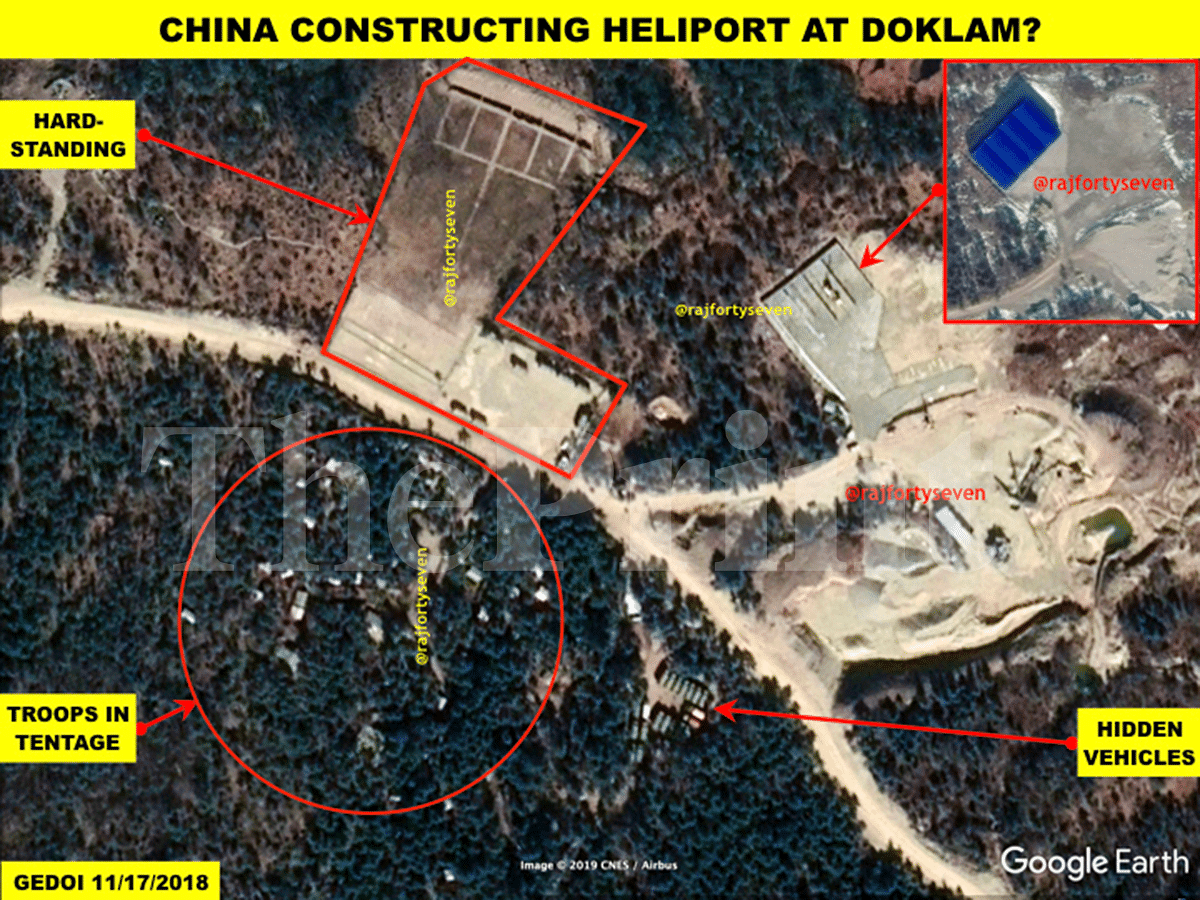
One of the hard-standings has a four-bay garage measuring 25m x 40m, which could possibly be a hangar for helicopters, especially attack helicopters like the Z-10 or Z-19.
Any helicopter deployment here would require other support facilities, including refuelling and repairs. These will likely come up sooner than later.
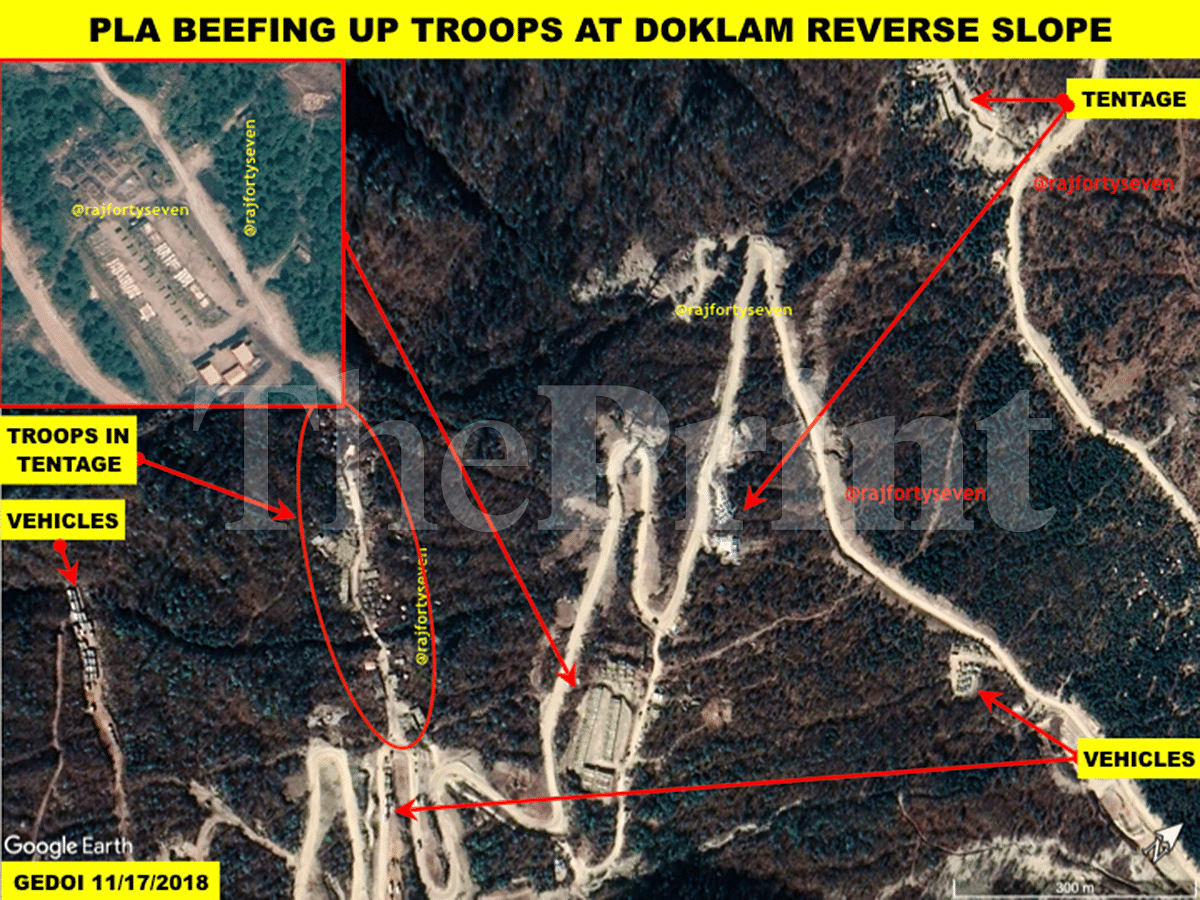
Two of the places are large enough to contain at least a battalion each, with all the paraphernalia, including vehicles.
There are at least one hundred vehicles on the reverse slope, barely 2 km from the Doklam plateau. A very large number of tents are seen under camouflage nets, while many others are observed hidden under the large trees growing on the reverse slope.
A number of tents and semi-permanent structures are also observed for accommodating troops and other supporting equipment.
New road
A new road has been constructed to the west of the Torsa river below the plateau. The road climbs up to the new hangar area over the ridge.
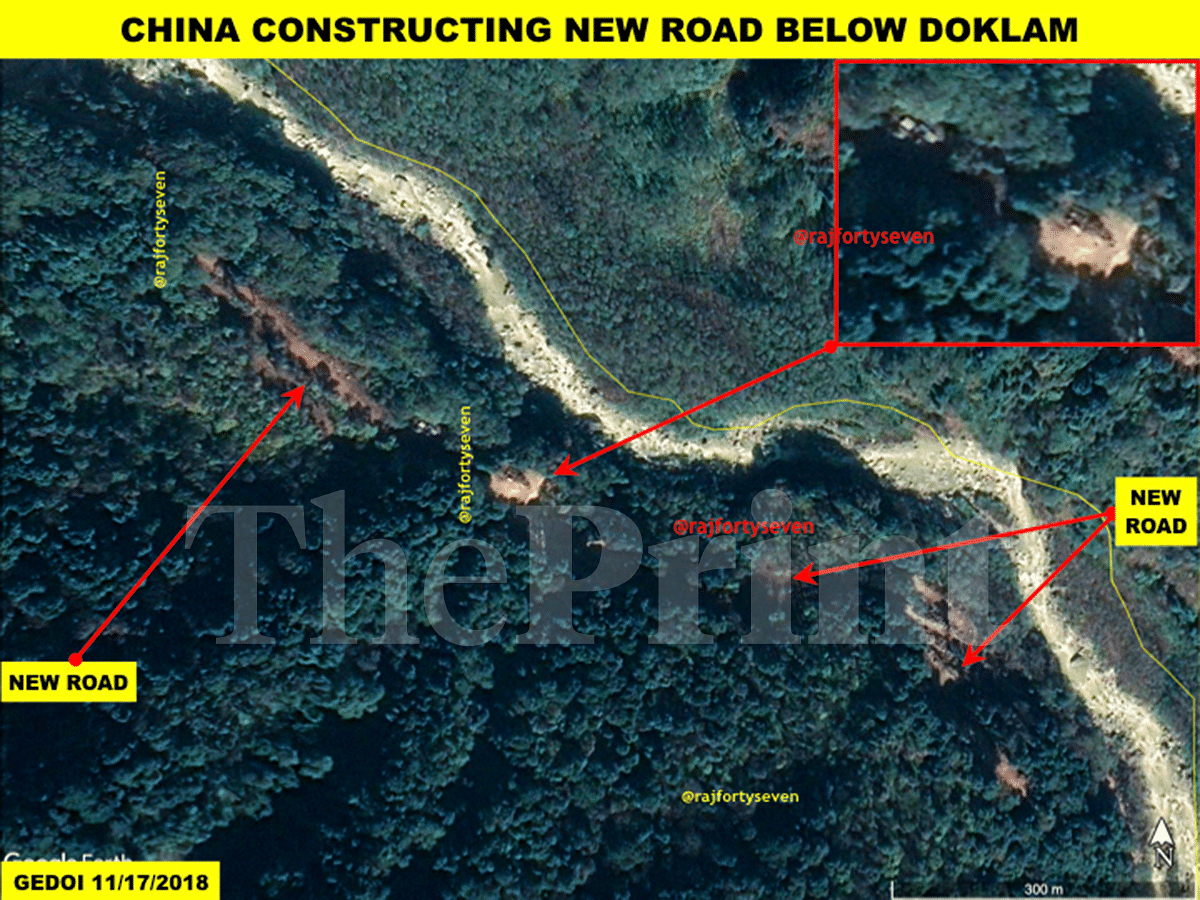
The new road is camouflaged with the same brown mud as its surroundings, so that it doesn’t become visible on aerial or satellite imagery. The road joins the new black-topped road going to the Doklam plateau.
Tsona sector
After the India-China confrontation in Doklam in 2017, the PLA suddenly started beefing up its strength and constructing infrastructure in Tsona, just like it did all along the entire Indian border.
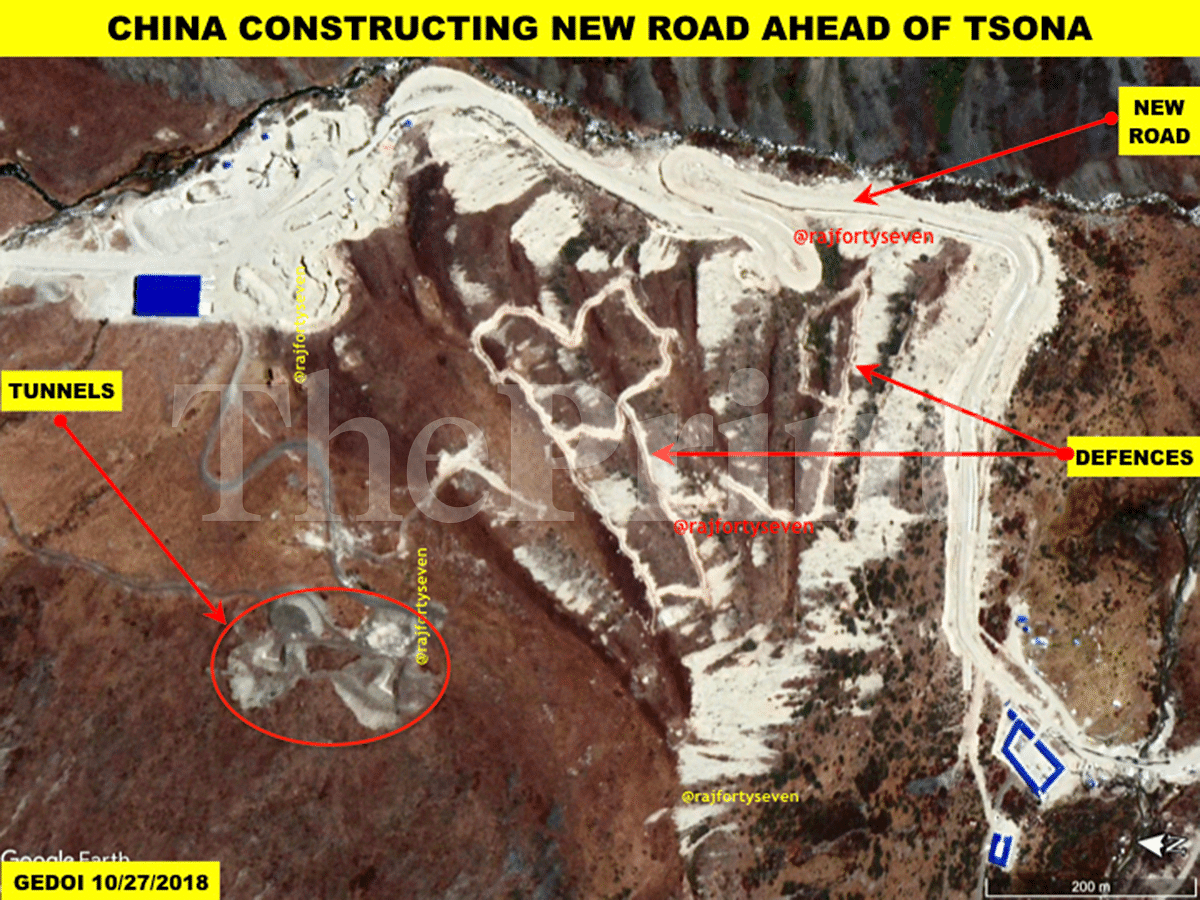
A two-way black-topped road is being constructed with a number of bridges to ensure speedy replenishment and reinforcements to this area.
Troops, numbering more than a battalion, are stationed ahead of Tsona in tents under camouflage nets. They are tactically deployed in eight different groups, dispersed enough to avoid any aerial detection or action.
A tunnelled facility approximately 7.5 km from the Indian border is possibly being upgraded, with additional defensive bunkers around.
Also read: China learns lessons from Doklam, changes logistics & supply systems in Tibet


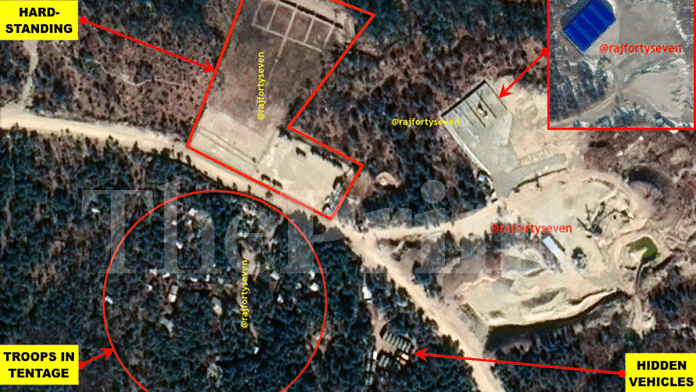

Sorry to say but your articles are the press briefing of Indian forces .
The only saving grace is that war was forestalled.
Shall we expect some stern warnings to china from our prime minister? If it were Pakistan certainly we would hear so. Let us see how 56 inch chest works